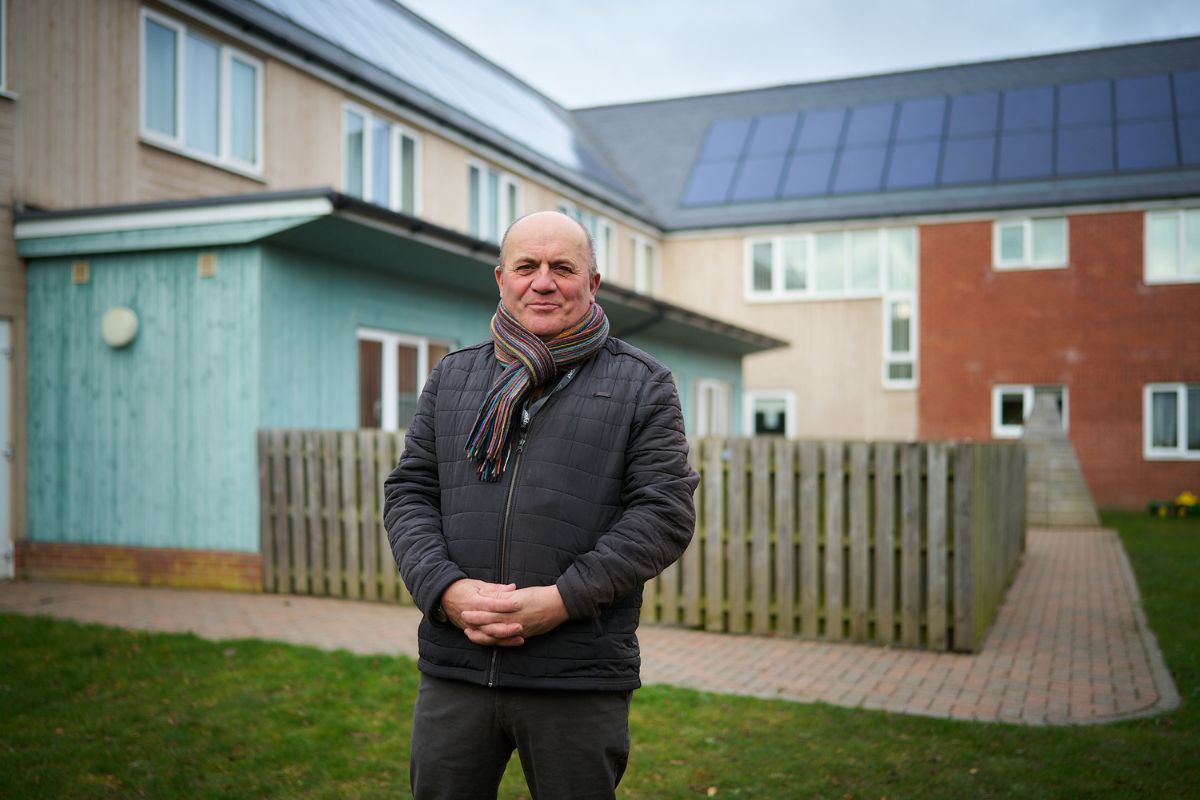Can innovation unlock net zero for the UK's housing stock?
Decarbonisation has long since been a function of innovation.
The seeds of the energy transition were sown in halls of Bell Laboratories in the 1950s, where the photovoltaic effect was first harnessed into usable energy via the first practical silicon solar cell. Today, scientists and engineers continue to invent to replace dirty incumbent technologies – doing everything from making cement from bacteria, powering aeroplanes with hydrogen, and speeding up natural geological processes to capture carbon with rocks.
While new technologies to replace old dirty incumbents are critical for making net zero possible, they are not the whole innovation story. Particularly with the boom of AI, inventors are asking another important question: how can innovation create efficiency? In other words, can it make net zero happen faster, and for cheaper?
Retrofit challenges, technological solutions
The Climate Change Committee estimates that £250 billion in investment in retrofit will be required to reach net zero goals – nine billion every year. With the average cost of a deep retrofit per home at £35k, representing more than 20% of the average house price in parts of the UK, resource efficiency is drastically need. Three key efficiency-related bottlenecks stimy retrofit progress today:
- Workforce: there is a critical lack of skilled labourers – surveyors and installers. How will retrofit works be delivered at the scale required?
- Funding: while the government mandates social housing to decarbonise, housing providers’ financial contribution is limited to 10% of the cost. A £96 billion financing gap must be filled
- Data: no universal, reliable system exists to measure how buildings perform. Similarly, once data is collected, few know what to do with it. How can the sector make data work for itself?
All of these bottlenecks can be solved, at least in part, by innovations in efficiency. Take the workforce example: it is estimated that a labour force of 400,000 must be trained by 2030 to meet UK climate commitments. So Cambridge-based Vundahaus designed EWI panels and a process around them to make installation happen 4x faster, in a process by which a kit-of-parts is delivered to a site fully labelled and with detailed assembly instructions for installers to assemble in a few days. Other innovators are innovation in education technology (EdTech) to solve the problem – with companies like Greenworkx on a mission to train ten million green workers in ten years.
Where Vundahaus and Greenworkx innovate to crack the workforce challenge, Tallarna invents on retrofit finance. By pooling experienced third party funders, legal structuring to aid in off-balance sheet treatment, and structuring projects to improve buildings’ uplift and cashflow, Tallarna makes social housing retrofits ‘financial assets’ – effectively closing the retrofit funding gap to make more retrofits happen faster, and for less (efficiency).
Machine learning and computer vision, finally, are being used to minimise costs and increase efficiency in retrofit planning. Our company, Kestrix, uses this technology to automate energy surveys. By collecting thermal images of buildings at area scale with drones and using AI to analyse images to detect heat loss and generate retrofit plans, we endeavour to slash the cost of obtaining real data on energy advice on a property by more than 80%. Other innovators take the drone out of the picture, doing energy performance modelling and simulation just from the desktop – Skenario Labs, MapMortar, and Parity Projects to name a few.

Innovation on the ground
Retrofit innovators using the UK as a testbed evidence of two themes: i) the UK’s housing stock is very leaky, and ii) the UK’s innovation ecosystem is very good.
The strength of the retrofit tech ecosystem reflects a broader UK trend; in 2022, UK startups received the lionshare of European investment dollars (24 billion euro), doubling that which French and German startups raised, and trailing only the US and China. Of this 24 billion, three billion was raised by Impact-Tech startups, mostly in the green energy space, but some in the retrofit space. All startups mentioned above have raised some investment, Kestrix included. This strong ecosystem has been bolstered by a blend of policies; tax schemes like the Seed Enterprise Investment scheme make taking financial risks easier for angel investors, work permits like the global talent visa make it attractive for foreign entrepreneurs to move to the UK, and a robust grant system through InnovateUK gives more early stage companies a chance to innovate. In the case of UK social housing, innovation budgets can even be awarded to de-risk collaborations between organisations and startups, e.g. in the case of Social Housing Decarbonisation Fund Wave 2.2.
Despite the support in the ecosystem, problems persist. Startups that receive Seed investment, especially those building complex AI- or hardware- enabled products, must cross the infamous ‘valley of death’ – the space between initial investment and true commercialisation (read: not just pilots). More than 90% of startups fail because they cannot cross this. This is partly due to limitations of private capital; but it is also due to cultures resisting digital innovation and sustainability across sectors. Housing is not immune, and if housing actors do not take steps to adopt new technologies and inform their development such that they work for the sector, many innovations are at risk of never coming to market.
Building Kestrix
Kestrix was born of two tech employees encountering the same problem in two entirely different contexts – and coming together to solve it. Matt was a high-tech product manager at Google with a passion for sustainability. Despite having grown up with his parents renovating homes around him, when Matt went to retrofit his own home, he could not figure out the first best thing to do to make it more energy efficient was. With a computer vision background, he thought “what if you could see the heat leaks?” He began experimenting with aerial thermography to uncover the problem areas.
While Matt wondered what to do to his house, I was one of the first 10 employees at Plan A, the first carbon accounting and ESG reporting software company to market in Germany, helping clients across sectors calculate their corporate carbon footprints and devise net zero pathways. Whilst our software calculated carbon footprints and gave decarbonisation advice, for built environment clients, modelled data was usually not going deep enough. Coming up with a budget for decarbonising a portfolio necessitated not only an EPC, but data on what the problems were – which windows were leaky? How badly were they leaking? And how big were they – as that would be a key determinant of how to fix them? It was almost as if you could not get the data you needed without going to each and every building. Unless…
Matt and I came together via the Carbon13 Venture Builder in 2022 and launched Kestrix to solve retrofit’s data problem – with thermal drones and AI, we set out to map every building in Europe (or even the world) for heat loss, so that retrofits everywhere could be planned, prioritised, priced, and financed as efficiently as needed to solve this problem.
No innovation in a void
We have learned first-hand through building Kestrix that despite its immense promise, innovation has its crutches and limitations when it comes to solving systemic problems like climate change. For one, we have learned there is no innovation without adoption; for innovation to work, the housing sector (and indeed every sector) must be bold in its willingness to adopt new solutions and invest the time to steer companies to solve real problems. We have been lucky to work with early adopters like Clarion, Peabody, and United Living on our technology, which has meant we can build with their guidance. However, innovation budgets must be expanded such that they not only finance early-stage technology R&D, but that they incentivise and de-risk adoption of solutions at scale. Furthermore, it cannot just be a small group of trailblazers that take the leap – cultures of digitisation and sustainability must be fostered in each and every council, housing association, and local authority. This begins by solving the resource problem in the sector.
Which leads us to government. Not only does the sector need more financial support, but government must stop wavering and give consistent steer – U-turns on net zero policy send market signals and have legitimate consequences for investments made into the very technologies that make decarbonisation more efficient. This synergy between innovation, adoption, and consistent governmental support is really what will make net zero happen – efficiently and effectively.
Lucy Lyons is co-founder & CEO of Kestrix






